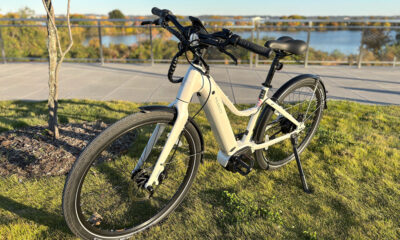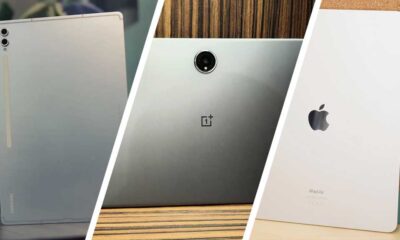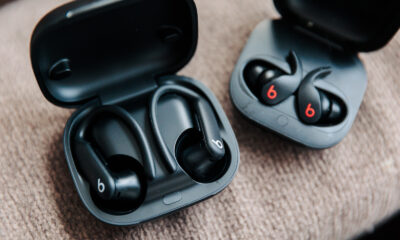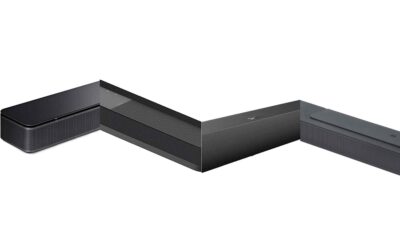Gadgets
The best speakers for projectors in 2025, tested and reviewed
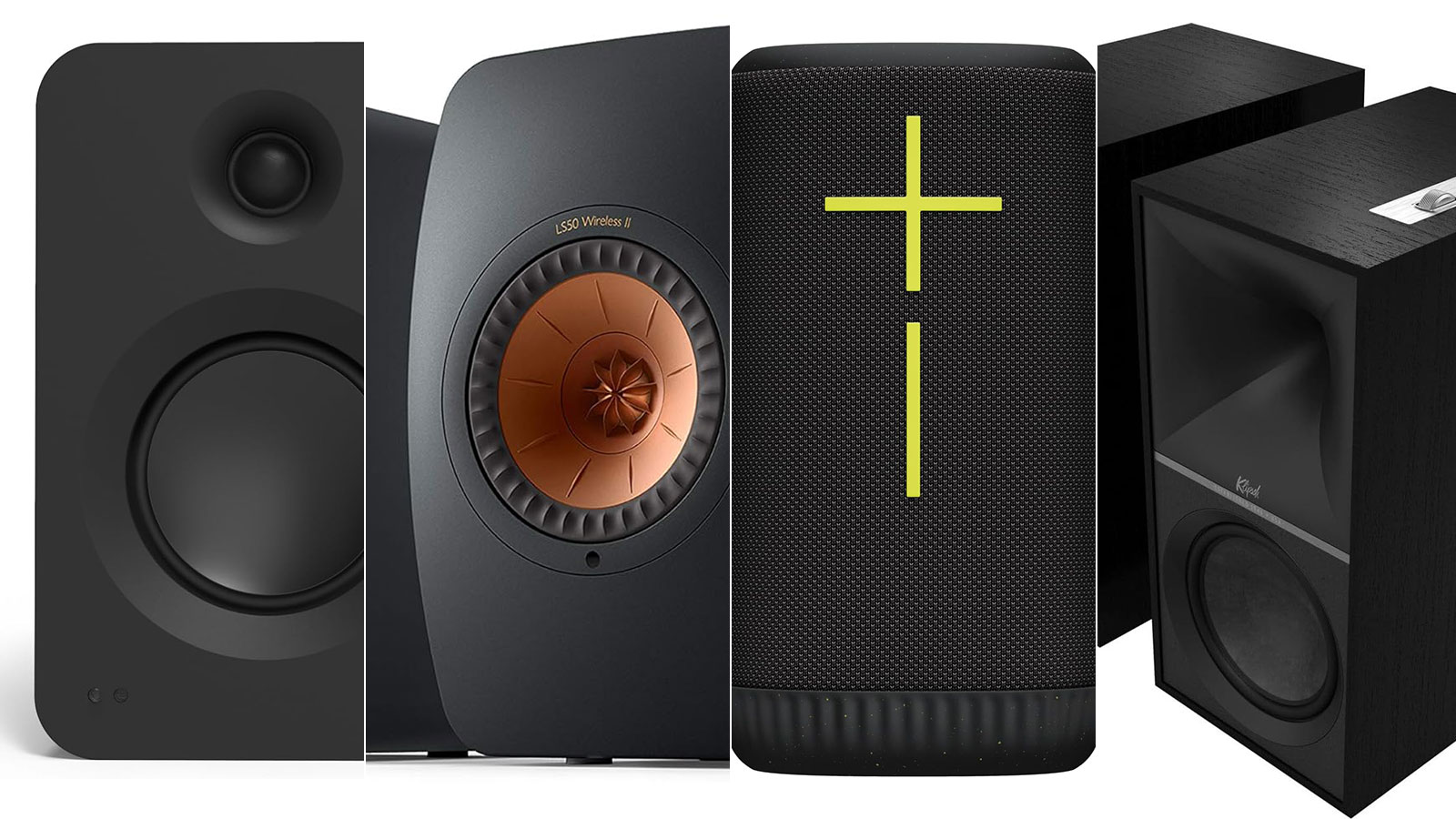
We may earn revenue from the products available on this page and participate in affiliate programs. Learn more ›
Home theater projectors have become incredibly affordable in the last few years, to the point that we recommend them as an alternative to big-screen TVs. Most newer projectors have a built-in speaker system, but its output is limited, which is why we recommend getting dedicated stereo speakers or a soundbar for your projector. Connecting your projector to a set of speakers will ensure the audio of your movies, TV shows, and games matches the majesty of the massive 4K HDR image you see on your wall or screen. The best speakers for projectors—like our best overall pick, the Kanto REN—are easy to set up, won’t require threading wires along the walls and under the carpets to get expressive audio and offer connectivity and versatility that’s space- and budget-friendly.
How we chose the best speakers for projectors
Ultimately, our goal with this guide was to present several sets of speakers designed to work best for different styles of projectors, rooms, and budgets. We selected speakers that pack the most performance into the smallest footprint, as folks into lifestyle projectors are likely minimalists or space-challenged (otherwise, you might be reading about 4K/8K TVs and/or surround sound systems). These speakers are particularly suited for UST (Ultra Short Throw) projectors (some people call them “Laser TVs”), as they can flank one and keep your entire setup tight to one wall. But they’ll sound just as good with longer throw projectors; we have faith in your ability to find the right length cables for your setup.
In all cases, audio performance was paramount since fancy extras will never make up for lackluster bass or tinny highs. Some features, including wireless connectivity and support for surround sound, are represented by specific speakers. Our recommendations are based on a mix of hands-on testing and research to present you with the best options that are currently available. The world of technology moves quickly, but the speakers we’re recommending are designed with standard wired (HDMI cable, optical) and wireless (Bluetooth, Wi-Fi) connectivity standards, which will allow you to continue using them for the foreseeable future. If you choose to upgrade your projector or switch to a TV, you can continue to use these selections. In many cases, the best speakers for projectors can also be connected to another device, a turntable, for example, to pull double duty as both your home theater and hi-fi system.
The best speakers for projectors: Review & Choice
If you’re ready to move on from the speakers built into your projector to a set that’ll be as immersive as the moving images, you’ll find the perfect option below whether you’re into blockbusters or the big game. There’s no wrong answer, but carefully consider your specific needs before making your choice.
Best overall: Kanto REN
Chris Coke
See It
Specs
- Size: 8.5″ D x 7″ W x 10.9″ H
- Ports: HDMI, RCA, Optical Audio, AUX, USB-C, Subwoofer Out
- Surround sound capable:
- Price: $599
Pros
- A compact, living room-friendly size
- Ports that offer connectivity to a wide range of devices.
- A subwoofer output for expandability
Cons
- Bassheads might be tempted to get a subwoofer
Kanto’s REN is the ideal speaker set for projectors because they’re relatively small in body but packed with power and ports, which ensures compatibility with any system. The REN is so impressive it got a shoutout in PopSci’s guide to the best gadgets at CES 2025, alongside the debut of Kanto’s smaller UKI desktop/computer speakers.
While we recommend connecting the REN speakers to your projector using HDMI ARC and CEC for reasons we’ll explain later in this article, the presence of an optical audio and AUX port means you can connect it to any model. This is also helpful when connecting the speakers to a projector that only has one HDMI port. In that instance, using the sole HDMI port for an audio system disallows you from connecting a 4K Blu-ray player, game console, or media streamer to watch videos or play games. Similarly, having a ton of ports will allow you to use the REN speakers with a computer, turntable, and other gadgets if they’re close by and not being used by the projector.
Kanto outfitted the REN with a dual-driver system consisting of a 5.25-inch concave cone woofer and 1-inch silk dome tweeter powered by a 200W Class D amplifier featuring auto-wake functionality. This means no need to find the money and space for external amplification. And this audio system will be more than sufficient for making the sound effects and dialogue you’re seeing on screen feel like it’s front and center, allowing you to fully appreciate the TV show, movie, or video game’s soundtrack. At low volumes, the layering and detail can sound a bit compressed—not bad, or any worse than most TV soundbars in stereo output mode—but turn that front know to about 50 percent volume, it becomes very detailed, offering a room-filling, bold sound signature.
However, if you’d like to add a little more oomph to the system, you have the option of connecting a standalone subwoofer into the mix. Kanto says that the speakers will automatically filter frequencies below 80Hz to the sub output, so the woofer built into the REN can concentrate on digging deeper into the midrange.
We appreciate that Kanto offers a direct upgrade path to these speakers, even though adding more components increases the size and complexity of an otherwise straightforward system. Your projector may have a built-in equalizer in its audio settings, but the remote included with these speakers allows you to adjust the bass and treble response to your liking. While there is only one indicator light and no audio cues for relative levels, we recommend testing the stock settings thoroughly before making adjustments. If you find yourself needing to increase the bass significantly, consider adding a subwoofer. The speakers also feature built-in Vocal Boost and Night modes, which can be activated with the remote to emphasize or reduce frequencies associated with voices and loud noises. While it would be nice if they supported virtual surround sound, the stereo sound field is a significant improvement.
The Kanto Ken speakers have few downsides typical of compact bookshelf speakers, such as not being able to get as loud or delve as low as floor-standing models. However, they still deliver potent sound for their compact size. If you’re looking for better sound quality than what compact acoustic architectures can provide, these speakers are an excellent choice and the best value among our options.
The KEF LS50 Wireless II speakers are a splurge at $2,499, but they offer massive, rich audio quality with plenty of power from their built-in amplifier and a wide assortment of ports for various use cases. These powered, connected speakers are among the top-rated stereo options tested, delivering incredible sound. The unique Uni-Q dual-driver system and Metamaterial Absorption Technology result in a wider soundstage and more accurate off-axis response. These speakers are the ultimate complement to a premium projector, offering all common ports, support for major wireless audio standards, and playback of ultra-high-resolution audio files. While they sound fantastic on their own, adding a KEF KC62 subwoofer can enhance the low-end without taking up much space.
The KEF LS50 Wireless II speakers are a high-end, no-compromise audio solution for those looking for the best sound quality. If you want to experience every nuance of sound to match your ultra-big screen, these speakers are the perfect choice. Additionally, it is compatible with any streaming music service you prefer and offers additional inputs for turntables and other devices.
If we had to describe Klipsch The Nines speakers in one word, it would be “immense.” These speakers offer excellent overall audio performance with an 8-inch woofer that reduces the need for a subwoofer. The dynamic Bass EQ feature adjusts bass levels as you change the volume. The speakers also come with various ports and a price tag of $1,499.
The Nines deliver rich sound across different genres of music, both digitally and on vinyl. The speakers automatically adjust bass levels based on volume to prevent oversaturation. If desired, you can enhance the bass with an optional subwoofer. The speakers offer exceptional coherence, impressive imaging, and depth that draws you into the music.
For a more compact and affordable option, consider the $1,299 Sevens or the $1,299 PSB Alpha iQ. The Sevens have smaller 6.5-inch woofers, while the PSB Alpha iQ offers wireless connectivity and a compact design.
For a portable option, the Ultimate Ears EVERBOOM is a great choice. It features a Bluetooth range of up to 180 feet, 20 hours of battery life, and IP67 durability rating. The speaker delivers high-quality audio at high volumes, making it a versatile option for on-the-go entertainment. In the same way, the EVERBOOM Bluetooth speaker was designed for outdoor use with drivers pointing in multiple directions to provide 360-degree sound in mono. While it cannot be connected to a subwoofer or other audio components, this is not the main focus of using a Bluetooth speaker. For a portable projector that can be easily carried in a bag for outdoor movie nights, Ultimate Ears’ EVERBOOM is the top choice in its price and size range.
If stereo separation is important, especially for watching movies with multiple speakers or shifting action, the Bose SoundLink Max at $399 is worth considering. It is a portable speaker with L/R channel separation and an AUX input for projectors that support analog output.
For surround sound capability and Dolby Atmos support, the Sonos Arc Ultra is the best soundbar choice. With a 14-driver, 15-amplifier audio system that sends sound in various directions, the Arc Ultra provides an immersive experience without the need for additional speakers. It also offers modular upgradability with other Sonos speakers for a multiroom setup.
Factors to consider when choosing speakers for projectors include size, powered speakers for easy setup, and connectivity options such as HDMI ARC ports. Ultimately, the Sonos Arc Ultra stands out for its surround sound performance and connectivity features, making it a great choice for enhancing the audio experience with a projector. To enable volume control from your projector’s remote, connect the speakers accordingly. You can adjust the volume using the remote that came with the projector. Additionally, you may power on and off both the projector and speakers by pressing the power button on the projector’s remote.
If you have purchased a midrange to premium projector in the last five years, it likely includes an HDMI ARC port. Some projectors and speakers feature an optical audio port for high-resolution audio, while others have AUX/RCA outputs for analog connections.
While most recommended powered speaker systems offer stereo playback rather than surround sound, they still provide superior audio quality. You can enhance your setup by connecting your projector to a soundbar that supports Dolby Atmos, such as the Sonos Arc Ultra, for a more immersive experience without the need for multiple speakers and cables cluttering your space.
When it comes to the longevity of the speakers, our selections are built to last. You can use them with projectors, TVs, turntables, CD players, or Digital Audio Players for a decade or more, provided you maintain them properly. Most speakers do not require special software to operate, although some smart speakers may require an app for specific features. They also offer multiple inputs for connecting to various devices simultaneously.
The cost of speakers for projectors varies based on features, with our recommendations ranging from $250 to $2,999. Investing in quality speakers for your projector setup can significantly enhance your viewing experience, offering superior audio compared to built-in projector speakers. Once you experience the difference, you won’t want to go back to using built-in audio. Please rewrite this sentence. Can you please rewrite this sentence?
-

 Destination8 months ago
Destination8 months agoSingapore Airlines CEO set to join board of Air India, BA News, BA
-

 Breaking News10 months ago
Breaking News10 months agoCroatia to reintroduce compulsory military draft as regional tensions soar
-

 Gadgets3 months ago
Gadgets3 months agoSupernatural Season 16 Revival News, Cast, Plot and Release Date
-

 Tech News12 months ago
Tech News12 months agoBangladeshi police agents accused of selling citizens’ personal information on Telegram
-

 Productivity11 months ago
Productivity11 months agoHow Your Contact Center Can Become A Customer Engagement Center
-

 Gadgets3 weeks ago
Gadgets3 weeks agoFallout Season 2 Potential Release Date, Cast, Plot and News
-

 Breaking News10 months ago
Breaking News10 months agoBangladesh crisis: Refaat Ahmed sworn in as Bangladesh’s new chief justice
-

 Toys12 months ago
Toys12 months ago15 of the Best Trike & Tricycles Mums Recommend

